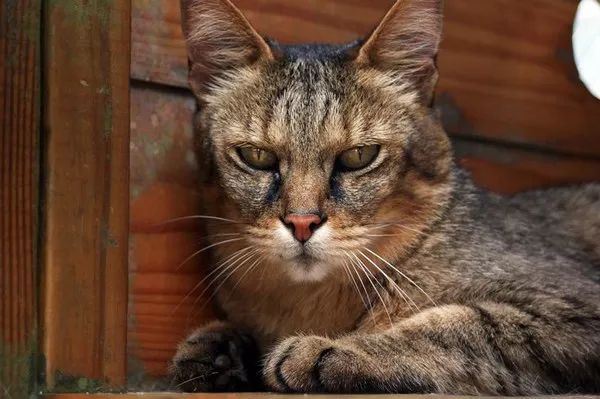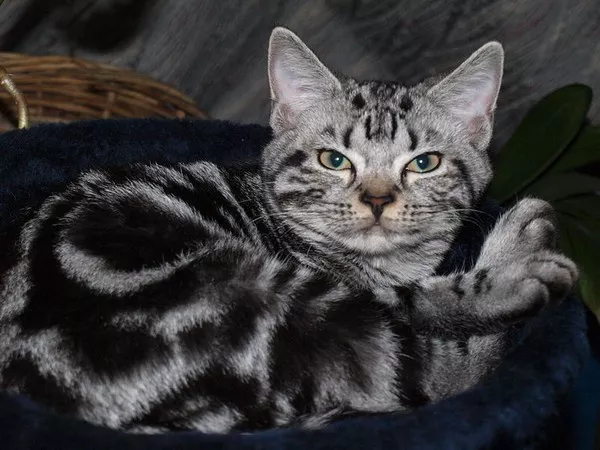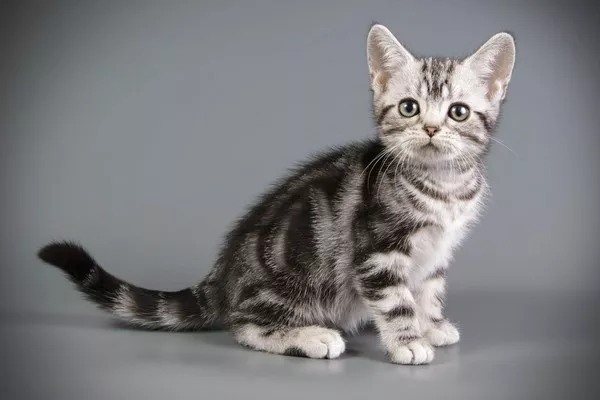The Chausie cat, a breed known for its wild appearance and energetic personality, is an intriguing subject for many cat enthusiasts. One of the key aspects that potential owners and breeders often inquire about is the weight of these unique cats. Understanding the weight of Chausie cats is essential for ensuring their health, managing their diet, and providing the best care possible. This comprehensive guide delves into the various factors influencing the weight of Chausie cats, typical weight ranges, and tips for maintaining a healthy weight.
Understanding the Chausie Cat
Origin and History
The Chausie cat, pronounced “chow-see,” is a hybrid breed created by crossing domestic cats with the Jungle Cat (Felis chaus). The breed was developed to combine the wild appearance of the Jungle Cat with the temperament and adaptability of domestic cats. This breed first appeared in the 1990s, and since then, it has gained recognition and popularity among exotic cat lovers. The International Cat Association (TICA) granted it full championship status in 2013.
Physical Characteristics
Chausie cats are notable for their striking appearance, which includes:
Athletic Build: They have a muscular and lean body, reflecting their wild ancestry.
Large Ears: Prominent, tufted ears similar to those of the Jungle Cat.
Long Legs: Enhancing their ability to leap and run with agility.
Short to Medium Coat: Usually comes in colors such as black, brown ticked tabby, and grizzled tabby.
Temperament and Behavior
Chausies are known for their high energy levels, intelligence, and curiosity. They are social animals that enjoy interaction with their human families and often get along well with other pets. Their playful nature requires a stimulating environment to keep them engaged and happy.
Factors Influencing Chausie Cat Weight
Genetic Background
The weight of a Chausie cat is significantly influenced by its genetic background. Since Chausies are hybrids, their size and weight can vary depending on the percentage of Jungle Cat genes they inherit. Early-generation Chausies (F1, F2) tend to be larger and heavier due to their closer genetic ties to the Jungle Cat.
Diet and Nutrition
Proper nutrition plays a crucial role in determining the weight of a Chausie cat. A balanced diet rich in proteins, vitamins, and minerals is essential for maintaining a healthy weight. Overfeeding or providing an imbalanced diet can lead to obesity, while underfeeding can result in malnutrition and underweight issues.
Age and Growth Stages
Chausie cats, like all cats, go through different growth stages that affect their weight. Kittens experience rapid growth and gain weight quickly in their first few months. As they approach adulthood, their growth rate slows down, and their weight stabilizes. Senior Chausies might experience weight loss due to age-related health issues.
Exercise and Activity Level
Given their high energy levels, Chausie cats require ample exercise to maintain a healthy weight. Lack of physical activity can lead to weight gain and related health problems. Providing an environment that encourages play, climbing, and exploration helps in managing their weight effectively.
Health Conditions
Certain health conditions can affect a Chausie cat’s weight. Hyperthyroidism, diabetes, and gastrointestinal issues can lead to weight loss or gain. Regular veterinary check-ups are crucial for early detection and management of such conditions.
Typical Weight Ranges for Chausie Cats
Weight Range for Male Chausie Cats
Male Chausie cats are generally larger and heavier than females. The typical weight range for a male Chausie cat is between 15 to 25 pounds (6.8 to 11.3 kg). However, some males, especially those with a higher percentage of Jungle Cat genes, can exceed this range.
Weight Range for Female Chausie Cats
Female Chausie cats are slightly smaller and lighter compared to males. The average weight for a female Chausie cat ranges from 10 to 20 pounds (4.5 to 9 kg). Like males, females with a closer genetic link to the Jungle Cat may also be heavier.
Comparative Weight Analysis
Compared to other domestic cat breeds, Chausie cats are on the heavier side. For instance, the average domestic cat weighs between 8 to 10 pounds (3.6 to 4.5 kg). The larger size and weight of Chausie cats are attributed to their wild ancestry and muscular build.
Maintaining a Healthy Weight for Chausie Cats
Balanced Diet and Nutrition
Providing a balanced diet is essential for maintaining the health and weight of a Chausie cat. Key components of a Chausie’s diet should include:
High-Quality Protein: Essential for muscle development and maintenance. Sources include chicken, turkey, fish, and specially formulated cat food.
Fats: Necessary for energy and healthy skin and coat. Include sources like fish oil and animal fats.
Vitamins and Minerals: Important for overall health. Ensure the diet includes essential vitamins and minerals through commercial cat food or supplements as advised by a veterinarian.
Portion Control and Feeding Schedule
Overfeeding can lead to obesity, while underfeeding can cause malnutrition. It is important to follow recommended portion sizes and feeding schedules. Most adult Chausie cats do well with two meals per day, while kittens may require more frequent feeding.
Regular Exercise and Play
Chausie cats are highly active and require regular exercise to prevent weight gain and boredom. Engaging them in interactive play sessions, providing climbing structures, and allowing them to explore safe outdoor environments can help keep them fit and healthy.
Routine Veterinary Check-Ups
Regular veterinary check-ups are essential for monitoring the health and weight of Chausie cats. Vets can provide valuable advice on diet, exercise, and detect any underlying health issues that may affect weight.
Common Health Issues Related to Weight
Obesity
Obesity is a common issue in domestic cats, including Chausies. It can lead to various health problems such as diabetes, arthritis, and heart disease. Preventing obesity involves a combination of proper diet, portion control, and regular exercise.
Underweight Issues
Being underweight can be just as concerning as obesity. It may indicate underlying health problems such as hyperthyroidism, gastrointestinal issues, or malnutrition. Ensuring a nutrient-rich diet and addressing any health concerns promptly is crucial.
Hyperthyroidism
Hyperthyroidism, a condition where the thyroid gland produces too much thyroid hormone, can cause weight loss despite an increased appetite. It is common in older cats and requires veterinary intervention for diagnosis and treatment.
Diabetes
Diabetes is a metabolic disorder that can affect Chausie cats, particularly those who are overweight. Symptoms include increased thirst, frequent urination, and weight loss. Managing diabetes involves diet control, weight management, and sometimes insulin therapy.
Gastrointestinal Disorders
Gastrointestinal disorders such as inflammatory bowel disease (IBD) or parasites can lead to weight loss and poor nutrient absorption. Regular veterinary care and appropriate treatments are necessary to manage these conditions.
Breeding Considerations and Weight
Selecting Breeding Pairs
When selecting breeding pairs, it’s important to consider the size and weight of the cats to maintain the desired traits of the breed. Breeding cats that are too large or too small can affect the overall health and standard of the breed.
Monitoring Growth in Kittens
Breeders should closely monitor the growth and development of Chausie kittens. Ensuring they receive adequate nutrition and care during their formative months sets the foundation for healthy adult weight.
Genetic Health
Genetic health plays a crucial role in the weight and overall health of Chausie cats. Responsible breeding practices that include genetic screening for common health issues can prevent the passing of detrimental traits to future generations.
Final Thoughts
The weight of Chausie cats varies based on several factors including genetics, diet, age, and activity level. Understanding these factors and providing appropriate care can help maintain a healthy weight and ensure a happy, active life for Chausie cats. Regular veterinary care, a balanced diet, and a stimulating environment are key components in preventing weight-related health issues. Whether you are a current owner, a potential adopter, or a breeder, this comprehensive guide serves as a valuable resource for managing and understanding the weight of Chausie cats.
























